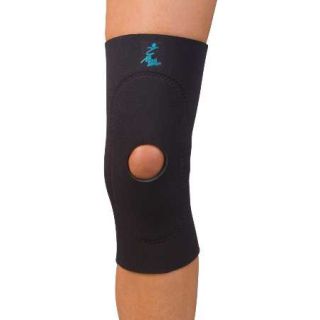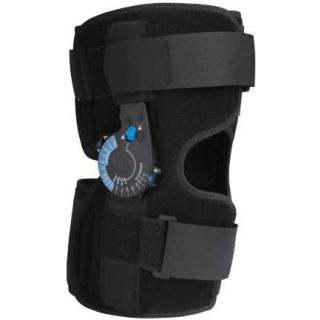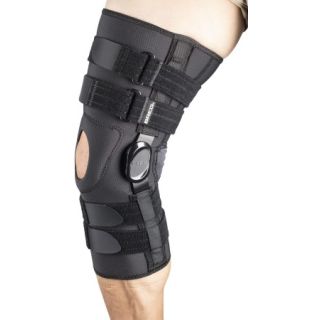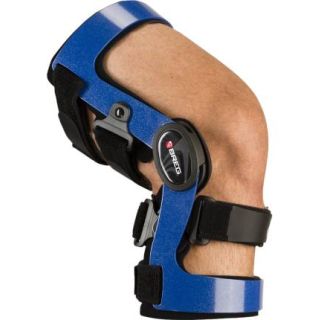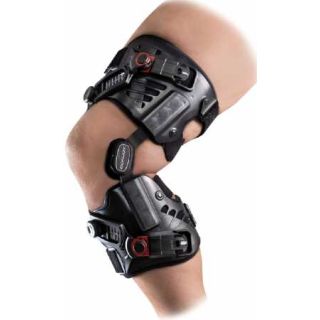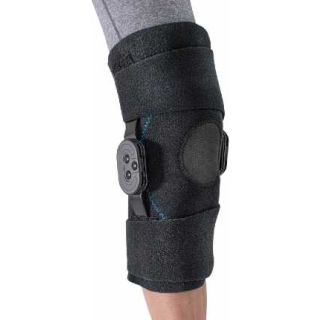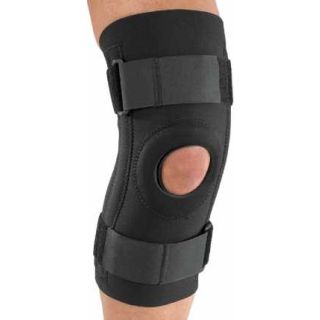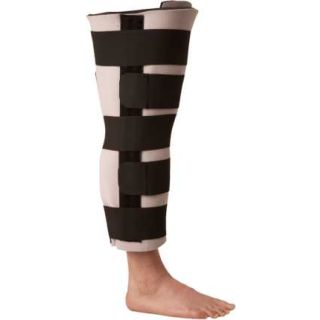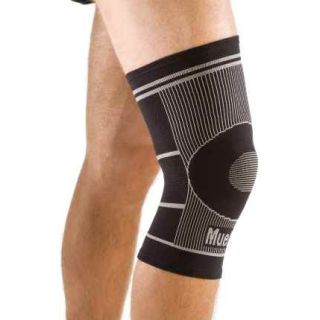Importance of Knee Braces and Knee Support
The knee is one of the most complex and crucial joints in the human body, responsible for a wide range of motions that include walking, running, jumping, and bending. Given its pivotal role in mobility, it is highly susceptible to injury. Knee injuries are common, especially among athletes, older adults, and people with physically demanding jobs. Knee braces and supports are often used to help prevent injuries, aid in recovery, and provide stability for those who suffer from chronic knee issues.
Keep reading below for the anatomy of the knee, types of injuries that can occur, the function and types of knee braces, the importance of knee support, their role in injury prevention and rehabilitation, and current trends in knee brace technology.
Anatomy of the Knee Joint
To fully understand the significance of knee braces and supports, it is essential to have a basic understanding of the knee's anatomy. The knee is a hinge joint, which connects the femur (thigh bone) to the tibia (shin bone). The patella (kneecap) sits in front of the joint to protect it. There are several key structures within the knee that contribute to its function and stability:
- Ligaments: The knee has four main ligaments—the anterior cruciate ligament (ACL), posterior cruciate ligament (PCL), medial collateral ligament (MCL), and lateral collateral ligament (LCL). These ligaments stabilize the knee and control its movements.
- Menisci: The medial and lateral menisci are cartilage that cushion the knee joint and distribute weight evenly across it.
- Tendons: Tendons connect muscles to bones. The quadriceps tendon and patellar tendon are important for knee movement.
- Cartilage: Articular cartilage covers the ends of bones to allow smooth joint movement.
Common Knee Injuries
Knee injuries are categorized into acute injuries (such as ligament tears or fractures) and chronic injuries (like osteoarthritis or tendinitis). Each injury type may benefit from knee support in different ways.
1. ACL Tears
The ACL is one of the most commonly injured ligaments, particularly among athletes. It is typically torn during movements involving sudden stops, jumps, or changes in direction. ACL injuries can result in significant instability of the knee and may require surgical repair. Post-surgery, knee braces play a vital role in providing stability and protection during recovery.
2. Meniscus Tears
Meniscus tears can occur during activities that cause twisting or rotating of the knee. Depending on the severity, meniscus injuries may heal on their own, but some cases require surgery. A knee brace for pain on the inside of the knee may help offload pressure on the meniscus during recovery, providing pain relief and improving function.
3. Patellar Tendinitis
Also known as “jumper’s knee,” patellar tendinitis occurs when the tendon connecting the kneecap to the shin becomes inflamed. It is a common overuse injury seen in activities like running and jumping. Knee bands, which are knee braces that apply pressure to the patellar tendon, can help alleviate pain and provide support for sports like running and basketball.
4. Osteoarthritis
Osteoarthritis is a degenerative joint condition where the cartilage between the bones wears down over time. This condition can lead to pain, stiffness, and loss of function in the knee. A knee brace can be used to offload weight from the affected area of the knee joint, helping to reduce pain and improve mobility.
5. MCL/LCL Tears
The MCL and LCL are located on the sides of the knee and are often injured by direct blows or trauma. Braces that provide lateral support can help stabilize the knee and allow healing.
Types of Knee Braces
Knee braces come in a variety of designs and serve different purposes, from mild support to complete immobilization. Below are the main categories of knee braces:
1. Prophylactic Knee Braces
Prophylactic braces are designed to prevent injury during contact sports. They are often worn by athletes in football, hockey, and rugby. These braces are intended to protect the knee from injuries caused by lateral impacts. Although some debate exists about the effectiveness of prophylactic braces, studies suggest they can help reduce the risk of ligament injuries.
2. Functional Knee Braces
Functional knee braces are used to provide support to knees that have already been injured. These braces are particularly helpful for people recovering from ACL or meniscus injuries. Functional braces stabilize the knee by limiting certain movements that could cause further damage, such as excessive twisting or bending. A knee sports brace can provide added protection when returning back to your favorite sport.
3. Rehabilitative Knee Braces
These braces are used immediately after surgery or injury to limit knee movement during the healing process. Rehabilitative braces are often adjustable, allowing the user to gradually increase their range of motion as the knee heals. They provide support during early rehabilitation phases and are commonly used after ACL repair or meniscus surgery.
4. Unloader Knee Braces
Unloader knee braces are primarily used by individuals with osteoarthritis. These braces shift the weight away from the affected area of the knee joint, reducing pain and improving function. They are designed to decrease the pressure on the inner or outer part of the knee, depending on where the arthritis is most severe.
5. Hinged Knee Braces
Hinged knee braces provide maximum support and are often used in cases where the knee needs significant stabilization. This type of knee brace with metal support features hinges on either side of the knee to control the direction of movement and prevent hyperextension. They are commonly used for ligament injuries and after reconstructive knee surgery. Our Brace Finder tool is great for finding the right knee brace for knee instability.
6. Sleeve-Style Knee Braces
Knee sleeves provide mild compression and support and are often used to manage swelling and pain associated with minor injuries or arthritis. They do not have the rigid structure of other braces but can help with proprioception (awareness of knee position) and offer light support during physical activity. Their cloth, padded knee brace designs can provide compression and support for a variety of activities.
Finding the right knee brace for knee pain can help improve your recovery from common knee injuries.
The Role of Knee Support in Injury Prevention and Rehabilitation
Injury Prevention
Knee braces play an essential role in preventing injuries, especially in high-impact or high-risk activities. Athletes, in particular, benefit from wearing prophylactic braces that provide stability and protection. In contact sports like football and rugby, knee braces can prevent ligament injuries from occurring due to the high amount of lateral force and pressure exerted on the knees during collisions.
In addition, individuals who have had previous knee injuries are at a higher risk for reinjury, especially if they resume high-intensity physical activities too soon. Knee braces provide the necessary external support to minimize this risk, allowing the knee to heal while reducing the likelihood of further damage. When looking for the best knee brace, it’s important to find the right brace according to your needs.
Rehabilitation
Knee support is crucial in the rehabilitation process following knee surgery or injury. After procedures such as ACL reconstruction, meniscus repair, or total knee replacement, the knee is often weak and vulnerable to reinjury. A rehab knee brace provides stability and protect the knee from excessive movement while the tissues heal.
Knee braces also aid in the controlled restoration of movement. Most post-operative knee braces are adjustable, allowing patients to gradually increase their range of motion as they regain strength and flexibility. This gradual approach ensures that the knee can heal properly without the risk of overextending or damaging the surgical repairs.
Furthermore, knee support can help manage chronic conditions such as osteoarthritis. By offloading weight from the affected part of the joint, a knee brace for pain can help improve function, allowing patients to remain active and delay the need for more invasive treatments such as joint replacement.
Benefits of Knee Braces and Supports
1. Pain Reduction
One of the most immediate benefits of wearing a knee brace is pain relief. Braces that compress the knee joint and surrounding muscles can help reduce swelling and inflammation, which are common causes of knee pain. Additionally, unloader braces can reduce pressure on specific parts of the knee, easing the discomfort caused by conditions such as osteoarthritis.
2. Improved Stability
Knee braces provide stability by limiting certain movements, such as excessive twisting or hyperextension. This is particularly important for individuals recovering from ligament injuries, as these movements can cause reinjury or delay healing. Functional braces (knee stabilizer) offer support for individuals who may experience instability due to weakened ligaments or tendons.
3. Enhanced Mobility
Contrary to the belief that braces can limit mobility, many modern knee braces are designed to enhance function and movement. By stabilizing the knee joint and preventing unsafe movements, knee braces can actually improve an individual's confidence in their ability to move, allowing them to engage in activities they may have otherwise avoided due to fear of pain or injury.
4. Injury Prevention
For athletes and physically active individuals, knee braces serve as a protective barrier, reducing the risk of injury. Prophylactic braces, in particular, are designed to prevent ligament injuries, which can occur due to high-impact collisions or twisting motions. By providing lateral support, these braces minimize the stress placed on the ligaments.
5. Mental Confidence
Beyond the physical benefits, knee braces also provide psychological reassurance. For individuals recovering from knee injuries, there can be a fear of reinjury, which may lead to avoidance of physical activity. Wearing a brace can instill a sense of confidence, allowing individuals to return to their normal activities without constant worry.
Drawbacks and Limitations of Knee Braces
While knee braces offer many benefits, they also have certain limitations and potential drawbacks:
1. Dependence on Braces
One of the main concerns with prolonged brace use is the potential for individuals to become dependent on the brace for stability, leading to a decrease in muscle strength. While knee braces provide external support, they should not be seen as a substitute for proper rehabilitation and strengthening exercises. Over-reliance on braces without addressing underlying weaknesses can delay full recovery.
2. Limited Effectiveness in Some Cases
Knee braces are not a one-size-fits-all solution. In certain cases, especially with severe injuries or advanced osteoarthritis, braces may not be able to provide sufficient support or pain relief. These individuals may require more intensive treatments, such as surgery or physical therapy.
3. Skin Irritation
Wearing a brace for extended periods can lead to skin irritation, especially if the brace is not properly fitted or if the skin underneath is prone to sweating. To minimize irritation, it is important to follow the manufacturer’s instructions for wear and maintenance.
4. Cost
Some knee braces, particularly custom-made or high-tech models, can be expensive. Insurance may not always cover the full cost, especially if the brace is not deemed medically necessary. While less expensive over-the-counter knee braces for walking and exercise are available, they may not provide the same level of support or comfort as custom braces.
Technological Advancements in Knee Braces
As medical technology advances, knee braces are becoming more sophisticated, incorporating new materials and designs aimed at improving comfort, functionality, and effectiveness.
1. Custom-Fit Braces
Advances in 3D printing technology have made it possible to create custom-fit knee braces that are tailored to an individual's unique anatomy. Custom braces provide a more precise fit, improving comfort and effectiveness. This is especially beneficial for individuals with complex knee issues or those who have experienced discomfort with off-the-shelf braces.
2. Innovative Materials
New materials, such as carbon fiber and lightweight composites, are being used to create knee braces that are both strong and lightweight. These materials provide the necessary support while allowing for greater flexibility and comfort. Additionally, some knee braces now feature moisture-wicking fabrics to improve comfort during prolonged use.
Knee braces and supports play an essential role in preventing injuries, aiding rehabilitation, and improving the quality of life for individuals with chronic knee conditions. Whether used as a preventative measure, during recovery from surgery, or to manage the symptoms of osteoarthritis, knee braces provide stability, pain relief, and enhanced mobility.
While knee braces offer many benefits, a knee brace should be used as part of a comprehensive treatment plan. Proper diagnosis, rehabilitation, and strengthening exercises should accompany brace use to ensure long-term knee health.
Need help finding the right knee support to support your knee? Seach our categories of different styles of knee braces here or use our brace guide to find the right brace for your needs.
 Details$87.99 $73.99
Details$87.99 $73.99 Details$97.99 $89.99
Details$97.99 $89.99 Details$32.99 $25.99
Details$32.99 $25.99 Details$139.99 $109.99
Details$139.99 $109.99 Details$192.99 $168.99
Details$192.99 $168.99 Details$37.99 $28.99
Details$37.99 $28.99 Details$899.99 $650.99
Details$899.99 $650.99 Details$289.99 $211.99
Details$289.99 $211.99 Details$60.99 $49.99
Details$60.99 $49.99 Details$69.99 $59.99
Details$69.99 $59.99 Details$22.99 $16.99
Details$22.99 $16.99 Details$63.99 $50.29
Details$63.99 $50.29

